CHAPTER 2D
LEGUMES INTRODUCTION
Legumes is the nutritional name used to describe the group of beans and peas, also referred to as pulses. The following pages will provide you with information about the various types of legumes, their nutritional value, historical information, their methods of preparation and unique recipes. The main legumes discussed are: carob bean, chickpea, green bean, kidney bean, lentils, lima bean, mung bean, peanut, pea and soy bean. Dried legumes are one of nature’s best stores of nutrition. They are basically a seed, and when water is added, new life will develop with every day of growth.
Pre-soaking of legumes has many advantages. For some legumes it is essential in order to convert the concentrated starches, especially stachyose and raffinose, to promote better digestion. Otherwise these undigested starches get attacked by intestinal bacteria, forming carbon dioxide and hydrogen gas, and causing flatulence and a great loss of nutritional benefits.
Raw-dried legumes also contain such substances as alkaloids, glycosides and saponin, and these are detrimental to digestion and are eliminated with long soaking and proper cooking. Pre-soaking for a few days will greatly enhance the digestion and nutrient quality of the associated legume. If you are short on time to prepare legumes, choose fresh beans, peas or try from a large variety of canned beans. They are very economical and can be stored in the pantry for those times when stocks are low or you need a big boost of energy and fibre.
Make sure that your kitchen is always well stocked with at least the essential basic legumes: chickpeas, kidney beans, lentils, lima beans, mung beans and soy beans. The variety of legume produce is abundant and their popularity is increasing due to the resurgence of many traditional recipes.
Legumes supply all the essential daily protein requirements and their ability to reduce blood cholesterol is a major benefit.
Generally speaking, legumes are classed as a carbohydrate food. However, millions of people throughout the world rely on legume produce for their daily protein requirements. A combination of an excess intake of animal proteins and insufficient legume produce are possibly the main contributing factors towards the multitude of heart and arterial diseases that are prevalent today.
This chapter on legumes will assist you with valuable information on the numerous legume benefits as well as ideas for methods of preparation. Once you have tried a few simple recipes, you will then realise how so many people throughout the world live to enjoy their legume meals.
Legume meals could easily replace at least two animal protein meals per week. Ideally, the balanced diet requires 20% of carbohydrates to be obtained from legumes. The legume kingdom is ready now with complete protein, numerous minerals, vitamins, abundant fibre and a beneficial slow-releasing energy. If you have the chance to order a legume meal at an authentic restaurant, treat yourself to the traditional and legendary legume flavours, textures and benefits.
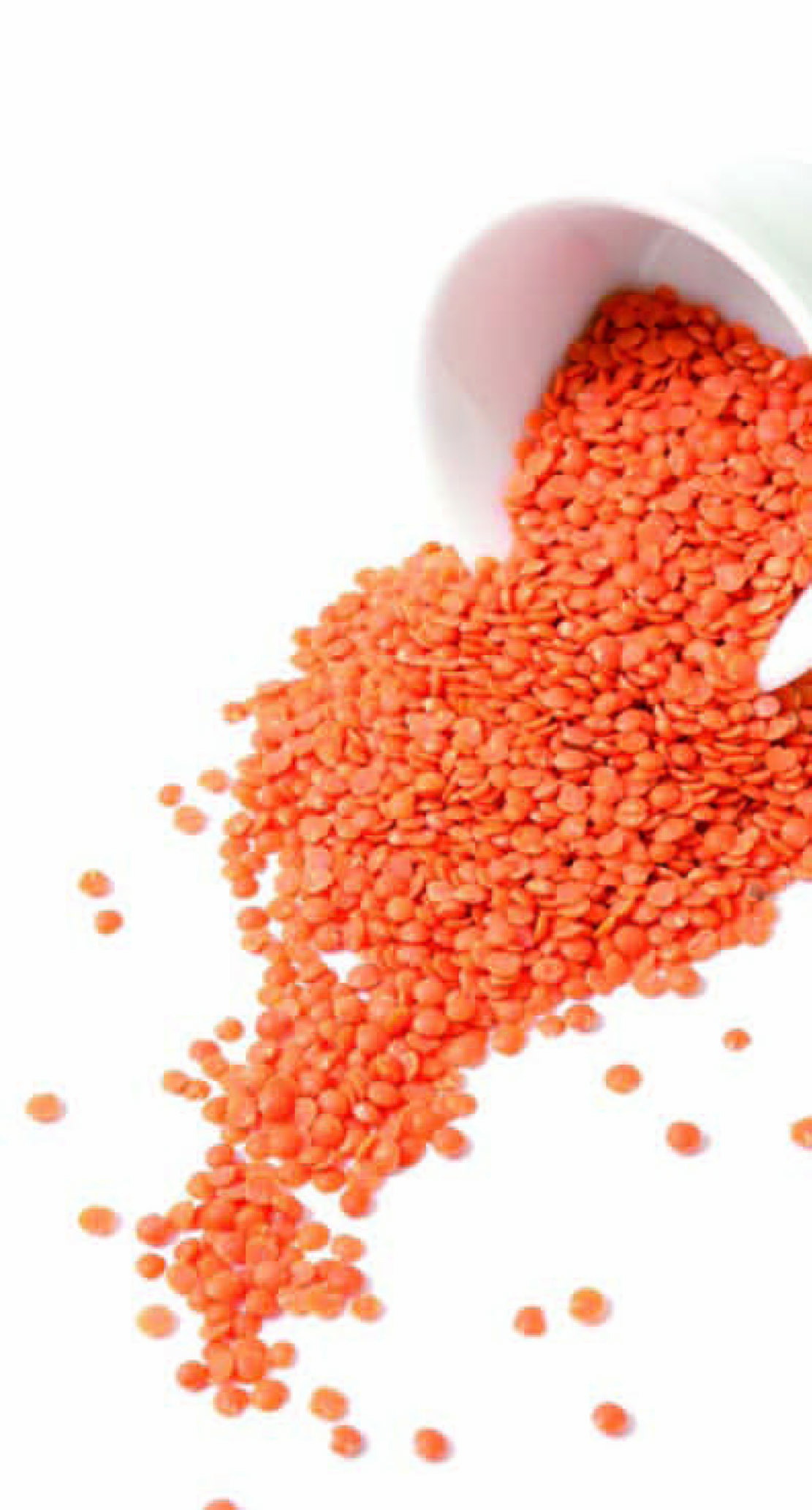
NOTE: All amounts in this book are measured in milligrams (mg) per 100 grams, unless stated otherwise.
| C. P. L. | CALORIES – total: 222 kcal. per 100 grams |
| 89 8 3 | Calories from: Carb: 198 Protein: 18 Fat: 6 |
CAROB BEANS – Ceratonia siliqua
Carob beans have a remarkable history. The carob tree is said to be the oldest known fruit-bearing tree in the areas of Syria, Palestine, Spain, Egypt and Sicily. Carob has provided generations with food and it has been given the title of ‘bread that grows on trees’, ‘staff of life’ and ‘St John’s bread’; it is mentioned in the Bible as providing energy, nourishment and food for thought during times in the wilderness.
Carob is a hardy food source. It can be stored for long periods and the large carob pods can be eaten as a sweet food, directly from the tree, when ripened to a very dark brown colour. One of the greatest benefits of carob is the alkaline balance it provides to the digestive system; no need for antacids, carob actually reduces stomach acidity. Carob is also an excellent source of natural pectin, vital for the treatment of stomach upsets and diarrhoea and the reduction of cholesterol. Pectin removes toxins from the digestive system and also promotes protein digestion, as it prevents digested protein from spoiling in the lower digestive system.
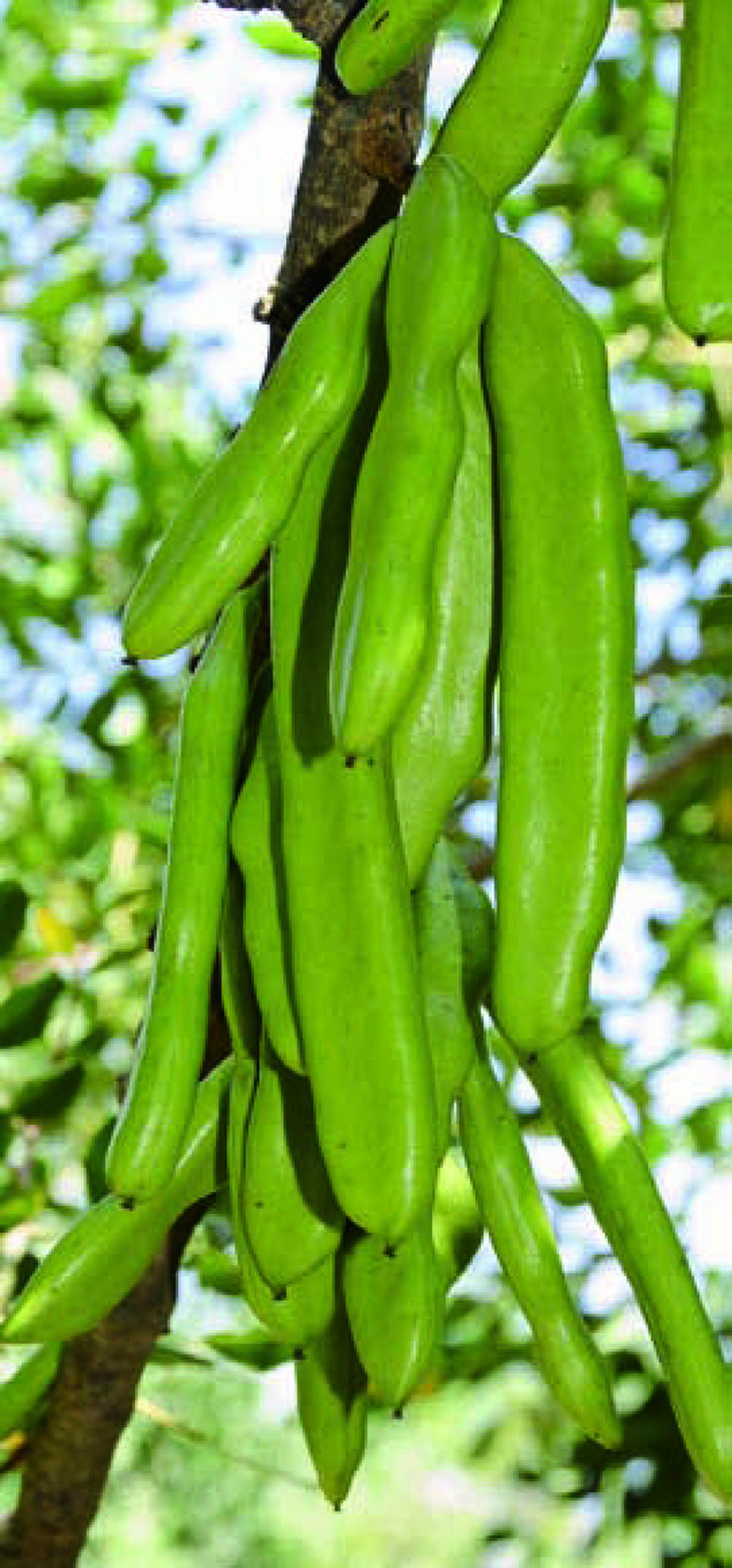
Carob is a compact carbohydrate food (89% or 30% d.v.) and it is full of fibre (40g or 159% d.v.) that’s bulky and noticeable when making carob drinks. Ideally, for a smooth drink, allow the carob sediment to settle and then pour the liquid content into another cup. In contrast to chocolate, carob contains no caffeine and no oxalic acid, and these two factors alone give carob the power to be an excellent replacement for chocolate or caffeine. For growing children especially, oxalic acid in chocolate binds with calcium and retards the absorption of this mighty mineral.
Carob is a very good source of calcium (348mg or 35% d.v. or nearly three times that of cow’s milk) and when combined with a milk shake, it provides a sweet flavour and does not require the loads of sugar normally associated with chocolate drinks. Carob provides excellent natural sweetness (49g) with the safety of vitamins B1, B2, B3, B5 and folate (30mcg) and a very good supply of the alkaline mineral potassium (827mg or 24% d.v.), ideal for active muscles and improved blood circulation. As potassium is heat sensitive, a carob drink will provide potent potassium, over twice that of bananas. The supply of the mineral copper (0.6–1mg) is only a quarter that of chocolate (3.8g), but the recommended daily intake of copper for adults is 1.5–3mg, so don’t overdose.
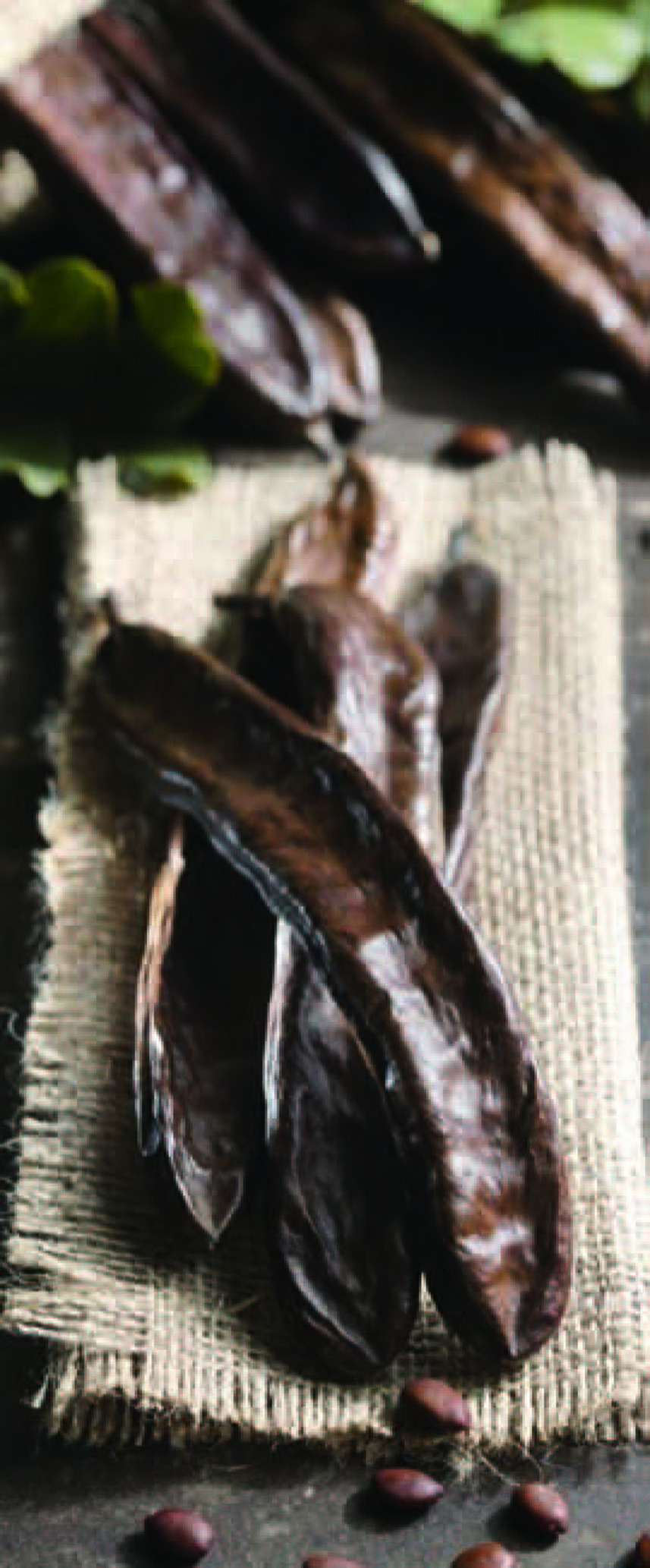
Carob and chocolate both provide approx.1g of zinc. The fat content of carob (1g) is mainly polyunsaturated and low compared to chocolate (8.4g) which is 60% saturated animal fat. When baking cookies, carob powder with complete protein (5g) adds a sweet flavour and dark colour to cookies. Make some carob crackles and you can be sure you’re giving the children a great party food. Add a small amount of honey and ice cream to any carob milk shake, drink or recipe, as this promotes a smooth consistency. Carob also provides magnesium (54mg), compared to chocolate with 13mg; phosphorus (79mg), compared to chocolate with 100mg; and twelve times the iron content of milk chocolate (3mg as opposed to 0.24mg). For adults, try carob with goat’s milk, soy milk or acidophilus milk. Carob snack bars are the ideal replacement for chocolate bars as they are a great calcium food plus they will promote digestion.
Carob was once used to measure precious stones and gold—it’s where the term ‘carat’ comes from. Now it is an easy to obtain, healthy and inexpensive sweet or snack.
NOTE: d.v. refers to the daily value for women 25–50 years, refer to RDI chart for adult male and child values.
| C. P. L. | CALORIES – total: 364 kcal. per 100 grams |
| 68 18 14 | Calories from: Carb: 246 Protein: 67 Fat: 51 |
CHICKPEAS – Cicer arietinum
Chickpeas are famous for their inclusion as the main ingredient in hummus, a common dip or spread these days and one that has supported people from the Middle East region for thousands of years. Another common name for chickpeas is garbanzos. They are available in various colours, such as the common light yellow, red, brown and black, but all have a distinct pointed pod in which two or three peas, also with a pointed tip, are located.
A famous recipe using chickpeas is the falafel. Here chickpeas are combined with sesame seeds, potato, onions, parsley, garlic and various spices such as cayenne pepper and paprika. Next time you see falafel for sale, invest in a truly amazing meal with tahini sauce—it is full of health benefits. If you are making hummus at home, pre-soak the beans for 2 to 4 days, rinsing twice a day. You will gain an increase in the protein value and a huge decrease in flatulence, due to the starch conversion.
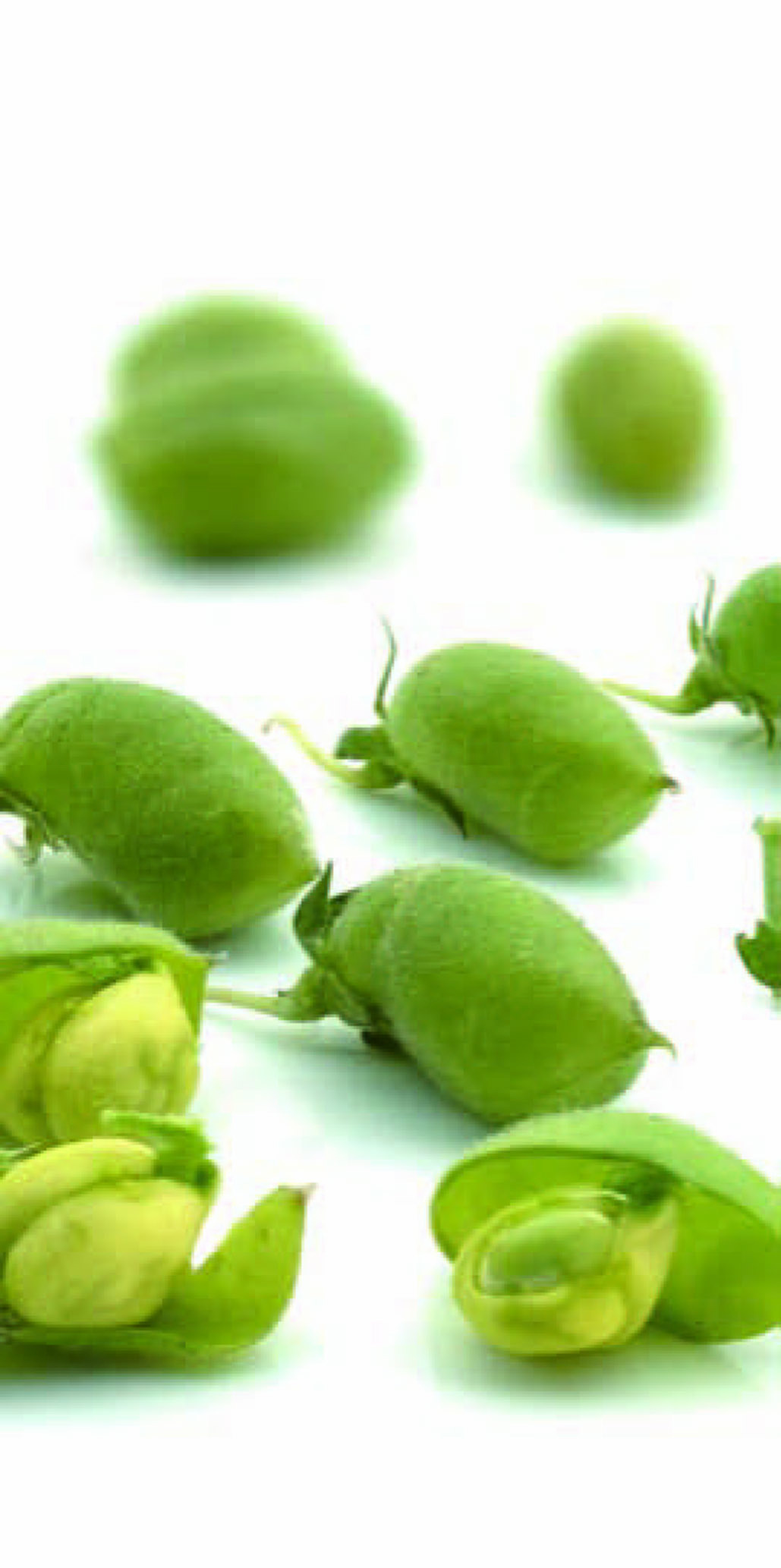
Chickpeas provide complete protein (19g or 40% d.v.) and with a dab of tahini on the falafel, the protein increases greatly, due to the balance of the amino acid methionine. For a complete fibre rich food (17g or 70% d.v.), chickpeas are ideal and if you need to be on a cholesterol free diet, you can gain extra benefits from chickpea fibre, as it binds with cholesterol-laden bile and eliminates it from the body. If you need a low-fat diet, chickpeas supply 6g (mainly unsaturated—5g) and only 51 calories from the fat content.
Chickpeas combine well with winter vegetables. For a tasty simple way to serve them, cook in water for 1 hour then place into the oven or frypan and lightly dry roast them. Sprinkle with pure olive oil and enjoy with a fresh salad or broccoli and cheese. The calcium content (105mg) is fair and the phosphorus content (366mg or 37% d.v.) is ample to assist proper digestion of the compact nutrients. The iron content (6mg or 35% d.v.) is of great benefit during pregnancy, lactation and any time you feel weary.
Chickpeas supply over three times the iron content of beef (1.9mg). In addition, the manganese content (2mg) and the very good copper content (1mg or 42% d.v.) are both vital for the production of new blood. Try some hummus as a dip during the week and offset those feelings of fatigue.
As with all legumes, the potassium content (875mg) is very good, but once again, it is a heat-sensitive nutrient, so sprout them first to reduce cooking time and increase nutrient values. The magnesium content (115mg or 29% d.v.) is another activating nutrient for the nervous system and brain, plus it is required to assist enzymes for digestion and hormone production.

Chickpeas supply five times the magnesium content of beef and milk. The supply of folate (557mcg or 139% d.v.) is excellent and vital for protection from heart attacks and for the proper functioning of the brain and nervous system. Folic acid is water soluble and required daily from the diet: for adults 200mcg, during pregnancy 400mcg and during lactation 350mcg. Spinach supplies only 95mcg of folate, so chickpeas are the folate king. The supply of the trace mineral molybdenum is excellent—over 75% daily value from a 1-cup serving. Very few foods supply molybdenum, which is required for the nerves and brain and fat metabolism.
Chickpeas are ready to please your nutritional appetite.
NOTE: All amounts in this book are measured in milligrams (mg) per 100 grams, unless stated otherwise.
| C. P. L. | CALORIES – total: 343 kcal. per 100 grams |
| 76 19 5 | Calories from: Carb: 261 Protein: 65 Fat: 17 |
GREEN BEANS – Phaseolus vulgaris
Green beans, commonly termed the French bean or string bean, belong to the same botanical species as the kidney bean. During the 16th century, the green bean was considered a luxury food for royalty and it is reported as one of the oldest known foods, dating back 7000 years in Mexico and known to the American Indians. The green bean supported the survival of early settlers in America prior to the cultivation of corn and other crops.
Green beans are a good carbohydrate food (8g), plus a fair source of dietary fibre (3.5g), important for elimination of waste as it binds with cancer-causing toxins, usually as a by-product of meat digestion, and cleanses the colon. As meat, chicken and fish provide no fibre, the addition of green beans to the menu is really a life saver in the long term.

The good supply of folate (40mcg) is worth snapping into especially for the expectant mother, as folate is vital for infant development and the reproduction of body cells. Folate also promotes brain function and is essential for the nervous system and to prevent nervous exhaustion. Folate is water soluble and required regularly from the diet. The supply of iron (1.1mg) plus vitamin K (22mcg) from the green bean is also important for an expectant mother, plus it is vital for the circulatory system. If you freeze your beans, the vitamin K may disappear, plus antibiotics, aspirin, mineral oils and x-rays can all deplete the body’s store of this fat-soluble vitamin. Green beans provide complete protein (2g) with a very low fat content (0.013g), so you can add the butter or oil to the slightly steamed green beans and still have a well-balanced food.
The supply of potassium (230mg) is worth picking beans fresh from the vine, as potassium is heat sensitive, and in combination with the phosphorus content (42mg) the benefits of increased oxygen into the brain for efficient mental function are obtained. The magnesium content of 25mg promotes nourishment to the white nerve fibres of the brain. The vitamin A content (700 I.U.) is fair and with the supply of vitamin C (16mg), the fresh French bean is an antioxidant food, able to retard the oxidation of cholesterol and subsequent arterial plaque.
The green bean is a safe food for diabetics (50 G.I.), plus it is said to promote the production of natural insulin due to the supply of plant hormones in combination with the small amount of the mineral zinc (0.26mg).
The green bean is very low in calories (34), and this combined with the supply of fibre, means you can easily eat them all day and feel satisfied that the waistline is on the decline! Slight cooking of the green bean, immersed in near boiling water for 2 minutes is ample to soften the texture. Add your favourite cream sauce and serve with grilled ocean fish and roast pumpkin for a colourful, healthful meal. Green beans supply a small amount of calcium (41mg), so add a sprinkle of cheese for a satisfying and bone-building entrée. When in season, the green bean is a very economical food and children seem to like the taste. That’s certainly a bonus for their health as green beans are the best legume source of vitamins A, K and folate.
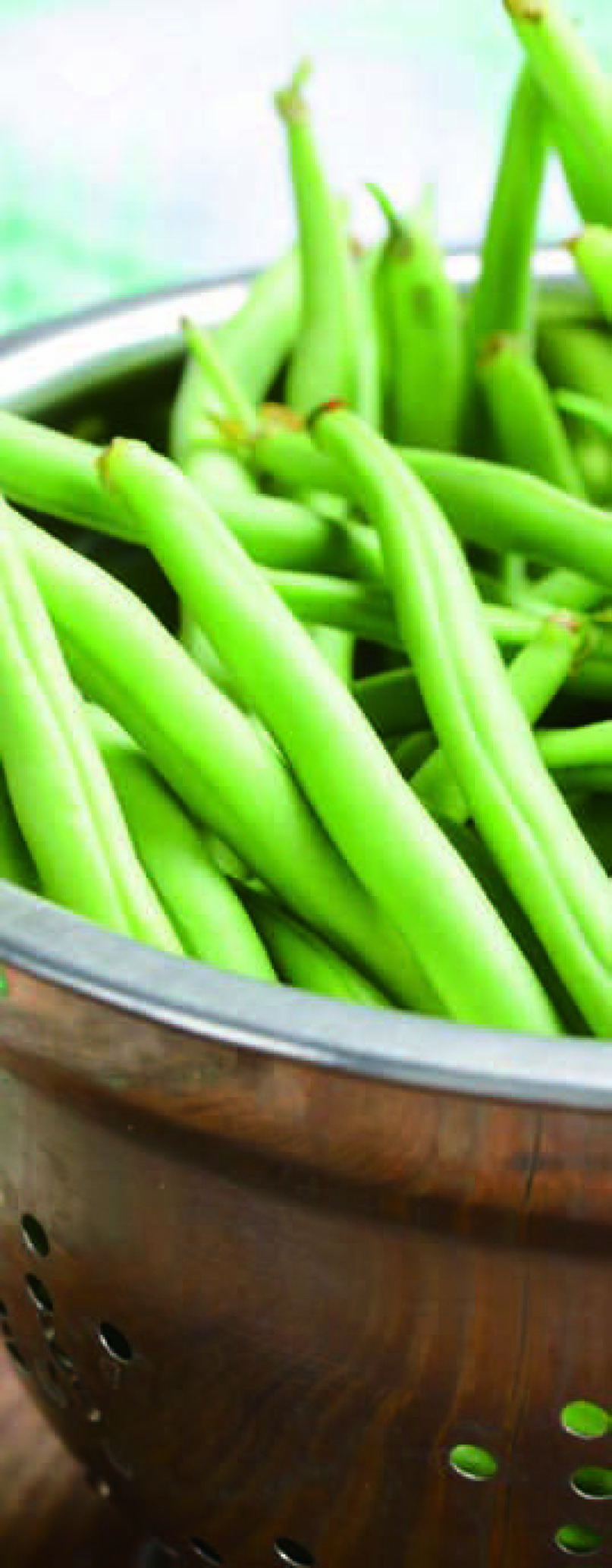
Whenever you see the green bean, if it snaps when you bend it, try it raw; or if it’s a few days old, lightly steam the green bean for an excellent addition to any protein meal, such as with rice, chicken, meat or fish. The green French bean will help you stay lean.
NOTE: d.v. refers to the daily value for women 25–50 years, refer to RDI chart for adult male and child values.
| C. P. L. | CALORIES – total: 333 kcal. per 100 grams |
| 73 25 2 | Calories from: Carb: 244 Protein: 82 Fat: 7 |
KIDNEY BEANS – Phaseolus vulgaris
Kidney beans have numerous cousins: the navy bean, pinto bean, Mexican black bean, cannellini bean, flageolet bean and haricot bean, plus the fresh green bean and snap bean. Originating in Peru, the Phaseolus vulgaris species spread around the world.
The red kidney bean is the most famous ‘canned bean’ or ‘baked bean’ and today it lines the supermarket shelves from Ulmarra to Uganda, providing one of the cheapest and easiest to prepare meals: baked beans on toast. The kidney bean is the main ingredient in numerous Mexican dishes; the bean taco with salad and cheese is a great meal that children like and they gain great benefits from the excellent protein value. On their own, kidney beans supply complete protein (24g or 47% d.v.), and with added cheese, two tacos will provide children aged 8 to 14 with all their daily protein requirements. In addition, kidney beans provide calcium (143mg), and with a good sprinkle of cheese, the taco can also provide all the daily calcium for growing children. The corn part of the taco shell is fairly low in nutrients but it provides the ‘crunch factor’ that stimulates the appetite.
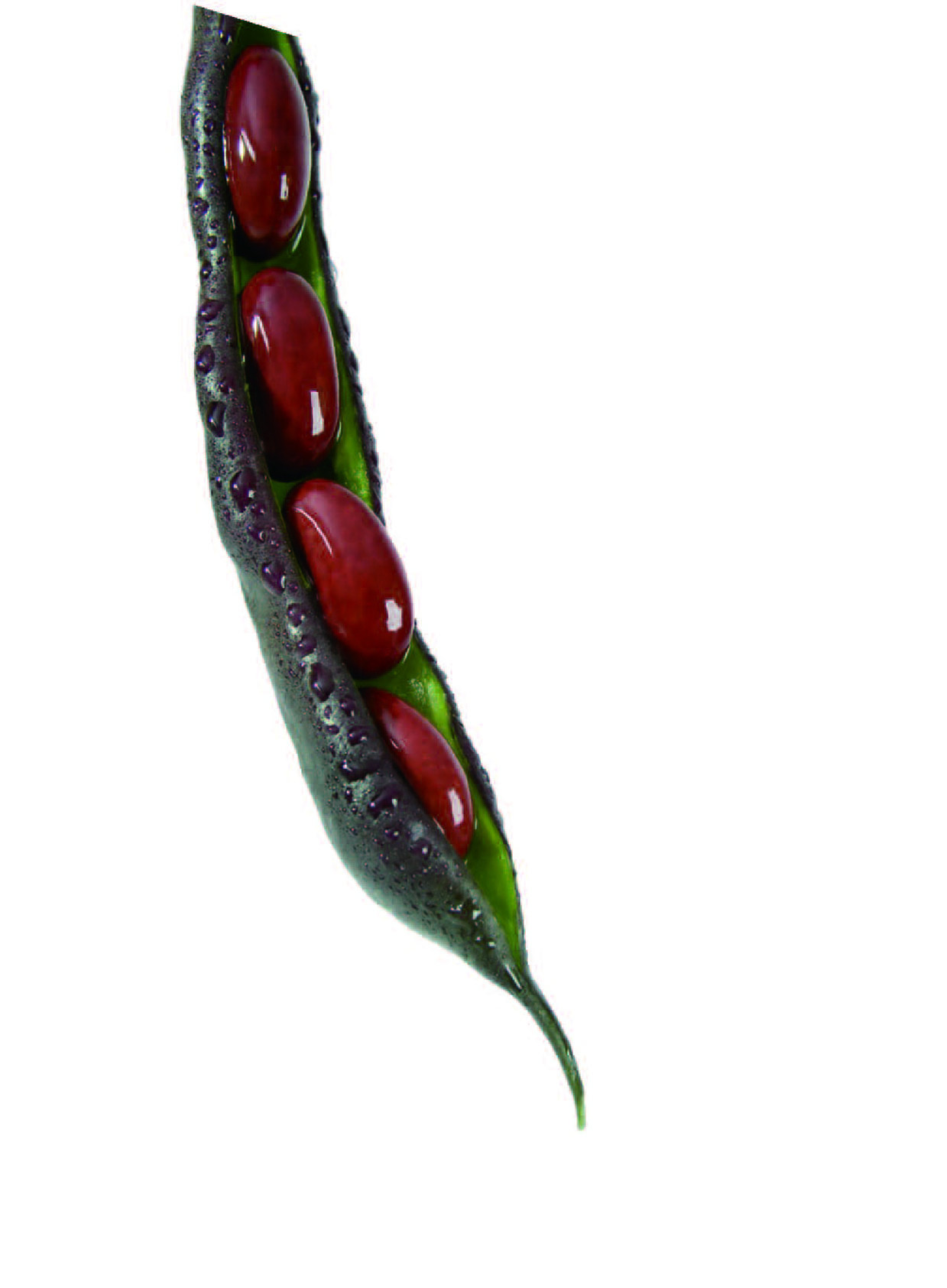
The carbohydrate content (60g) of kidney beans is as good as it gets, due to the excellent supply of fibre (25g or 100% d.v.) which helps stabilise the supply of blood sugar energy gradually, in contrast to the very common high glycemic index of white bread (70) and common processed potato chips (52). Kidney beans boiled have a low glycemic index of 29, canned beans have a GI of 52 and corn taco shells have a high glycemic index of 72. The added cheese in the taco will greatly reduce the GI of the corn shell and make it a safe food for children. For a very low-GI kidney bean meal, ideal for diabetics, use boiled kidney beans (29) with added cheese (0), onion (9), lettuce (5), tomato (35) and capsicum (8). Kidney beans are very low in fat content (1g), with only 7 calories per 100 gram serve, so you can add the cheese and still be confident of a very lean meal, plus an excellent supply of nutrients. The potassium content is 1406mg or 40% d.v., but it’s a heat sensitive nutrient, so sprout your legumes first to reduce cooking time by 70% and increase their nutrient balance and promote their digestion. If kidney beans are not sprouted and/or cooked properly, till soft, a toxic factor called haemagglutinin will not be removed from the bean and it may lead to gastroenteritis. Sprouting alone reduces the haemagglutinin in kidney beans to a level equal to that of other legumes.
For those people too busy to sprout and cook kidney beans, or other legumes, a wide range of well-cooked canned legumes is available at a very low price. They should be a regular part of the shopping list, as they are quick to prepare into nourishing meals. A bean salad in summer, for example, will provide excellent folate (394mcg or 98% d.v.)—lettuce only supplies 41mcg of folate.
For an excellent supply of organic iron (8mg or 46% d.v.), kidney beans are really essential, supplying four times the iron content of beef and over ten times that of cheese (0.67mg) or chicken. The supply of molybdenum is excellent (80% d.v.), plus there’s phosphorus (407mg or 41% d.v.), magnesium (140mg or 35% d.v.) and copper (48% d.v.). If you miss out on kidney beans in your diet, you may never get the full benefit of true health.
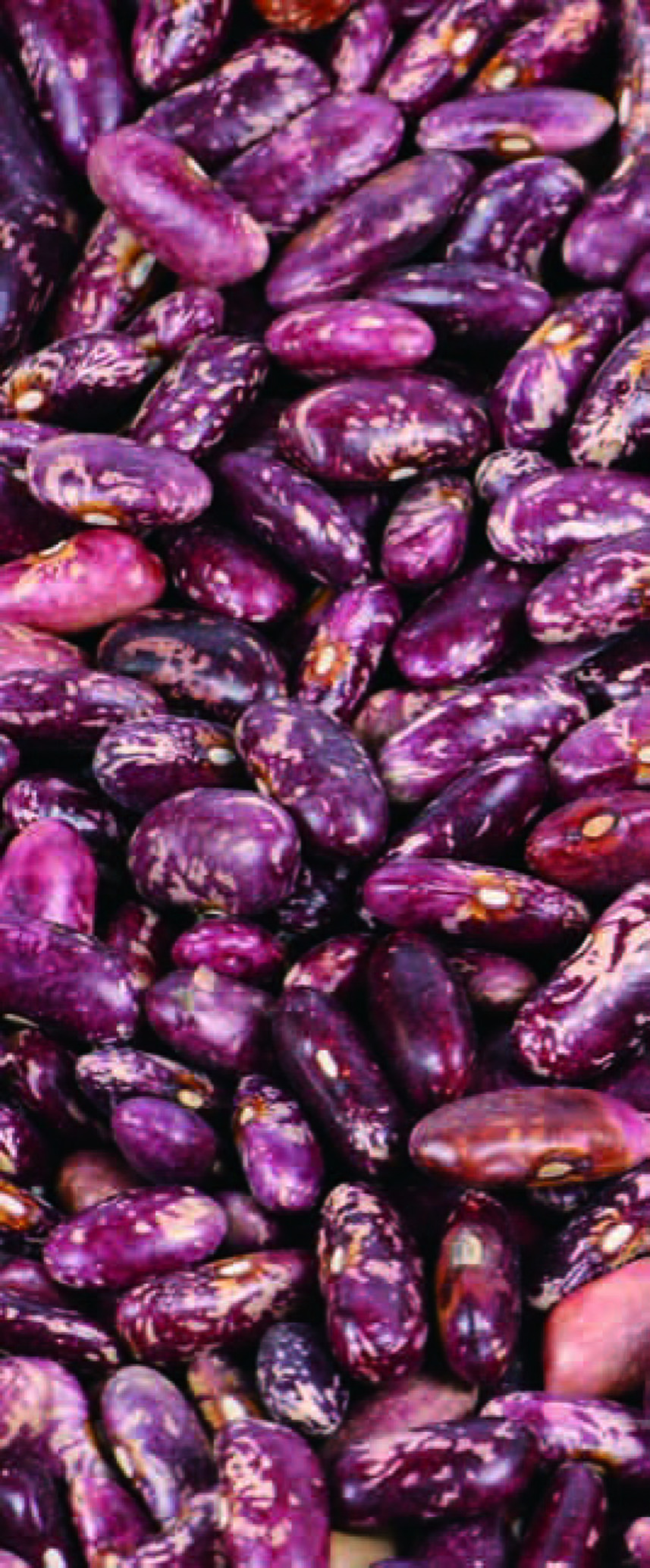
Kidney beans are ready and willing to support your nutritional needs!
NOTE: All amounts in this book are measured in milligrams (mg) per 100 grams, unless stated otherwise.
| C. P. L. | CALORIES – total: 338 kcal. per 100 grams |
| 69 29 2 | Calories from: Carb: 233 Protein: 97 Fat: 8 |
LENTILS – Lens aulinaris
Lentils have been around for ages; they were one of the first cultivated foods over 8000 years ago. Lentils also helped to build the mighty pyramids as they were used by the Egyptians as a main food for the labourers. Further proof of the power of lentils comes from the Russian soldiers during both world wars, as lentils provided the major part of their battlefield diet.
Two main types of lentils are available. There’s the common reddish-brown lentil from India, and in China the pale green lentil. And while they might be tiny, they’re power packed with benefits.
The protein value (28g or 56% d.v.) is complete in all the essential amino acids; however, lentils have a low net protein utilisation of 30%. From the total protein in lentils, only one-third is useable unless other foods are combined to assist in the balance of the limiting amino acids. Such foods as rice or cheese or egg are most commonly used and can improve the lentil protein balance by 50%. The main limiting amino acids in lentils are methionine and tryptophan.

Lentils are compact and provide a great supply of calories (338 or 17% d.v.) with a very low fat content of 1g. If you are a regular meat eater, the risk of cardiovascular and heart problems is likely, due to the saturated fat and cholesterol content. Lentils provide none of those nasties, and in fact, the excellent fibre content helps to lower cholesterol, as fibre binds with the fat-dissolving enzyme bile and helps to rid the body of the cholesterol within the bile.
Lentils are also a good food for diabetics as the low glycemic index of 27 with red lentils and 30 with brown or green lentils is another big benefit. Lentil vegetable soup or the famous Indian dish dahl, made from red lentils, onions, garlic, curry, tomatoes and a bay leaf, are really low on the GI scale and a small dob of sour cream in the soup or plain yoghurt makes a simple and tasty lunchtime or weekend snack or meal. Lentil burgers are another favourite.
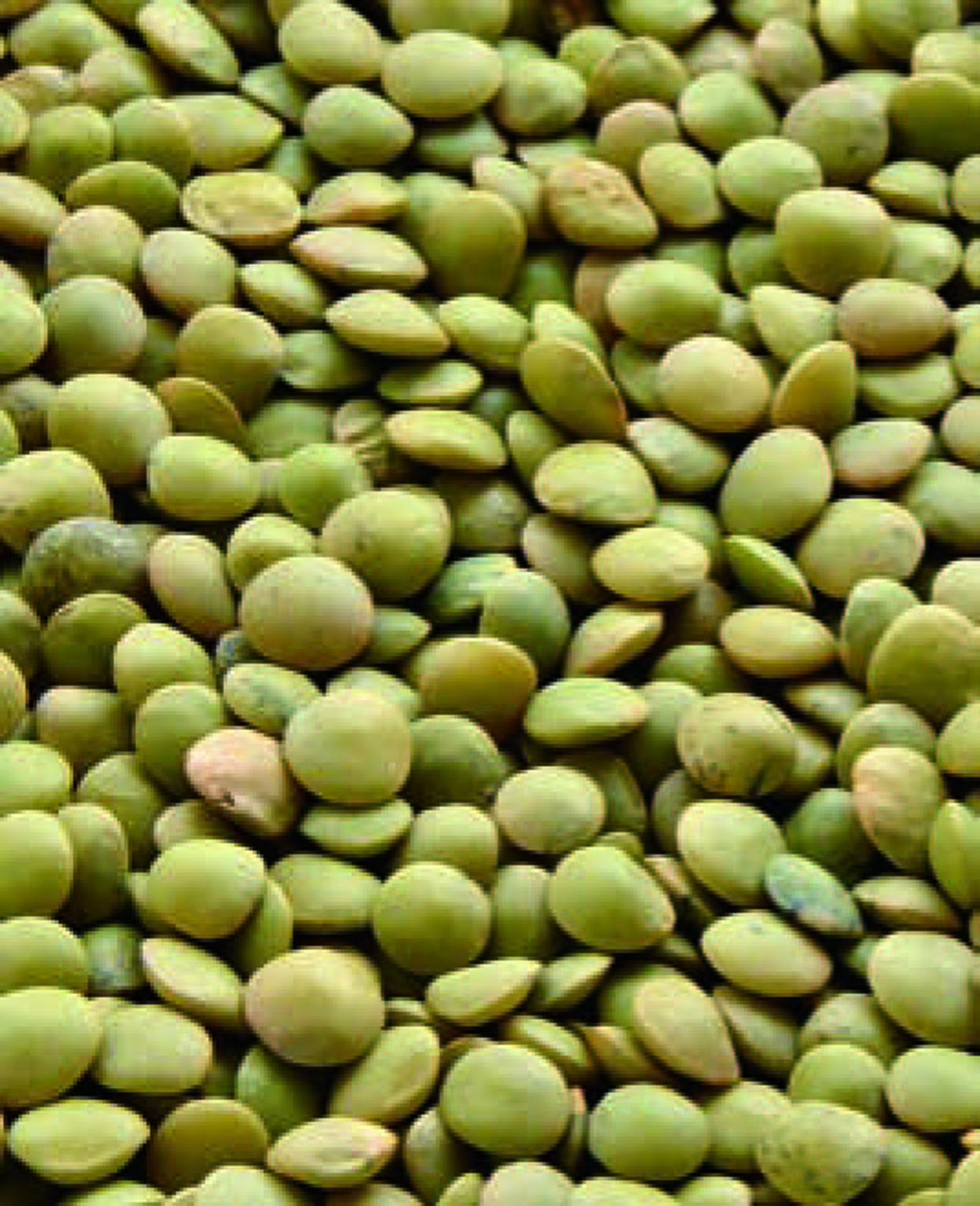
Let lentils loose in your kitchen and be amazed! One advantage with lentils, compared to other legumes, is they require far less cooking. Ideally, place the dried lentils on a large plate and check for any cracked or damaged seeds, then rinse the good lentils and place into boiling water. Allow water to reboil and then simmer the brown or green lentils for 50 minutes and red lentils for 30 minutes. Sprouting the lentils for two days is a good idea, but not essential. Sprouting and cooking converts the starches stachyose and raffinose into a simpler starch that can be absorbed into the bloodstream. Otherwise flatulence can occur as the intestinal bacteria will convert those starches into carbon dioxide and hydrogen—especially if lentils are not part of your regular diet.
Lentils provide an excellent supply of organic iron (9g or 50% d.v.) and that’s from a small 100 gram serve. Beef only supplies 2g iron! The secret behind the power of lentils is the potent iron content plus the supply of numerous minerals. From 1 cup of cooked lentils you also obtain an excellent supply of phosphorus (50% d.v.), copper (25% d.v.), molybdenum (90% d.v.), manganese (30% d.v.), magnesium (25% d.v.) and zinc (20% d.v.). Try getting that value from takeaway foods ‘without gas’!
Lentils were once termed ‘poor man’s meat’; they are now formally classified as the ‘rich, red, iron food’!
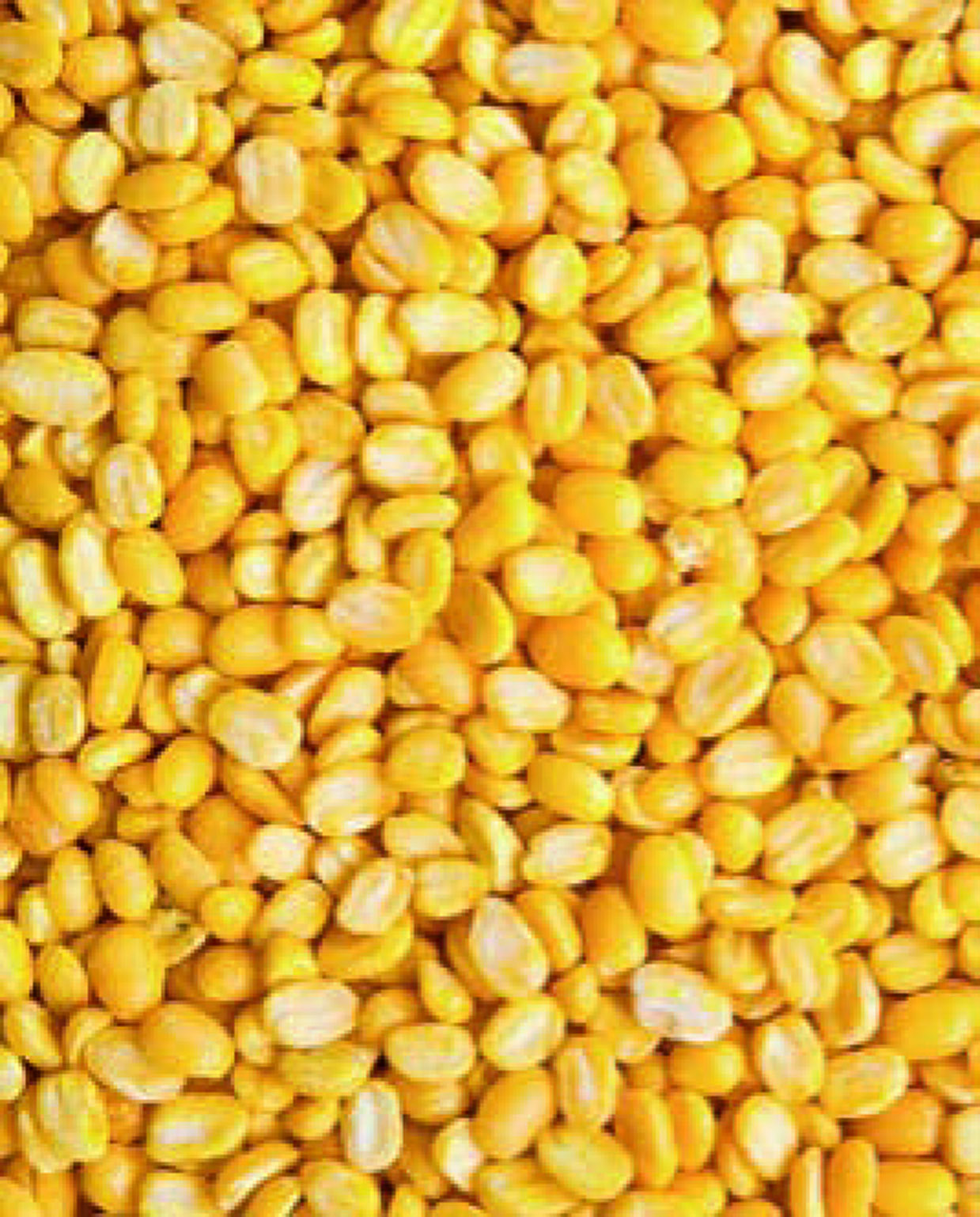
NOTE: d.v. refers to the daily value for women 25–50 years, refer to RDI chart for adult male and child values.
| C. P. L. | CALORIES – total: 338 kcal. per 100 grams |
| 76 22 2 | Calories from: Carb: 258 Protein: 74 Fat: 6 |
LIMA BEANS – Phaseolus lunatus
Lima beans gain their botanical name from the Greek word phases, for ‘aspect’ or ‘appearance’ and lunatus derived from the Latin luna, meaning ‘moon’. So lima beans ‘appear like the moon’. They are available as the common white, red, brown, black and purple.
As far as preparation goes, lima beans are best soaked overnight, to reduce the raffinose starch, or oligosaccharides. Buy a few cans of cooked lima beans from the local store for a quick, easy to add ingredient to many recipes.
Also known as butter beans, curry beans, pole beans and sieva beans, lima beans originated from Lima in Peru over 7000 years ago and were discovered by Christopher Columbus then introduced to Europe and Asia. The protein content (21g or 43% d.v.) is complete in all essential amino acids while the very low fat content (1g or 1% d.v.) means you can add the butter to the beans, just before serving, and relax about the added calories. Lima beans provide only 6 calories from unsaturated fats; butter supplies 700 calories per 100 grams, or 100 calories per teaspoon. As the recommended daily adult calorie intake is 2500–3000 kcal., the dab of butter with lima beans will easily fit into the balanced diet menu.
Lima beans are one of the foods richest in potassium (1700mg), equal to soy beans and more than any other legume or natural food. Potassium is heat sensitive and lima beans need to be cooked, but if pre-soaked and slow cooked, an abundance of potassium will still be supplied. The magnesium content (224mg or 56% d.v.) is not heat sensitive, neither is the phosphorus content (385mg or 38% d.v.). Both these major minerals are essential for the brain, nervous system and heart muscles.
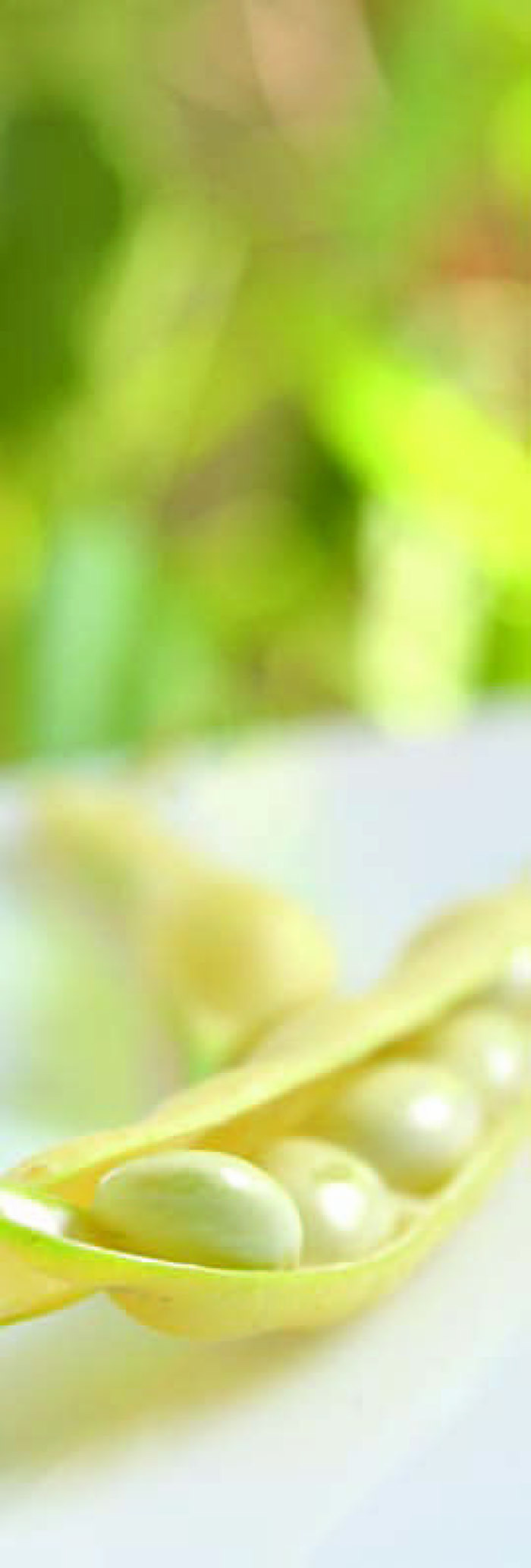
The manganese content (2mg) is similar to sunflower seeds, and after wheat germ, bran, nuts and seeds, lima beans are a very good source. Manganese works with enzymes for energy production and as an antioxidant; the enzyme superoxide dismutase needs manganese to destroy free radicals from within cells.
Even though they are white, lima beans are a rich source of organic iron (8mg or 42% d.v.). In addition, lima beans provide the following nutrients, from 1 cupful of cooked beans: molybdenum (85% d.v.), folate (40% d.v.), phosphorus (30%) and copper (20%). Now that’s a bean that’s full of beans!
Lima beans do contain purines, naturally occurring substances that are broken down by the digestive system into uric acid. For people suffering from gout or kidney stones, it is best to avoid lima beans due to the purine content, but a healthy body can eliminate uric acid—which is also a by-product of meat consumption, to a far greater degree than with lima beans. In addition, lima beans provide no saturated fat or cholesterol.
The rich fibre content in lima beans actually lowers cholesterol and also promotes a steady supply of valuable starch energy—and all for a price that’s cheap as chips. Buy some lima beans dried, canned or frozen and gain power from the protein, strength from the iron, and antioxidants from the manganese and molybdenum. Try a lima bean salad or the traditional native American dish succotash for a moonlight night to remember.
Get over your weary phase, let the power of lima beans liberate your life!
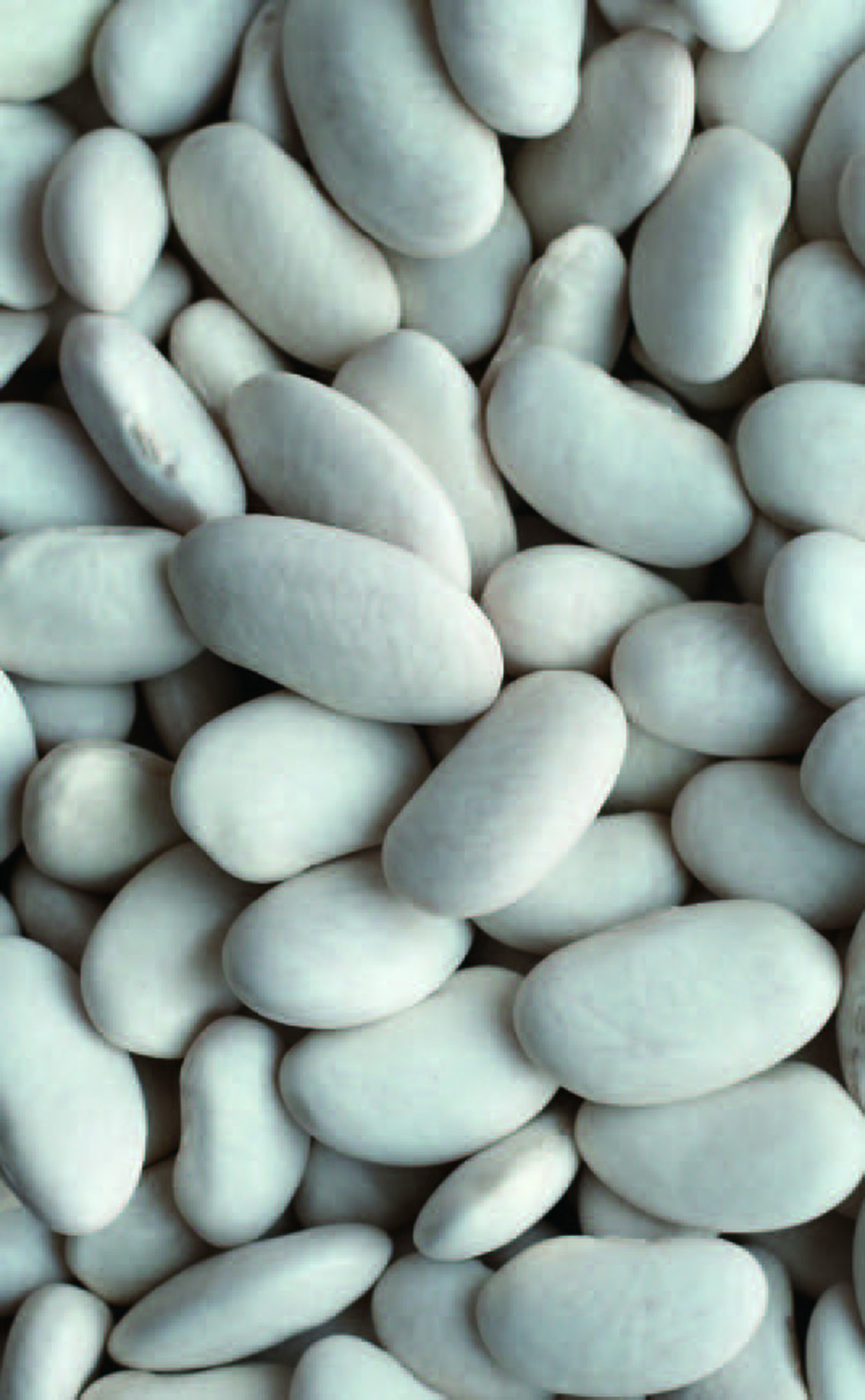
NOTE: All amounts in this book are measured in milligrams (mg) per 100 grams, unless stated otherwise.
| C. P. L. | CALORIES – total: 347 kcal. per 100 grams |
| 73 24 3 | Calories from: Carb: 255 Protein: 83 Fat: 10 |
MUNG BEAN – Phaseolus mungo
Mung beans have been around since before recorded history. In India, the mung bean was made into a flour or porridge, and in China the mung bean was part of the sprouting invention, thousands of years ago. Other names for the mung bean are: golden gram, black gram and green gram, plus the Oregon pea. If you need protein, mung beans are ready to supply 24g of complete protein, or 48% d.v.; mung bean sprouts supply 37g protein. Mung beans are full of dietary fibre (16g or 65% d.v.) and are beneficial for the elimination of toxic waste in the bowel. The iron content (7mg or 47% d.v.) is a bonus for the blood system in addition to the manganese (1mg) and the supply of copper (1mg or 47% d.v.).
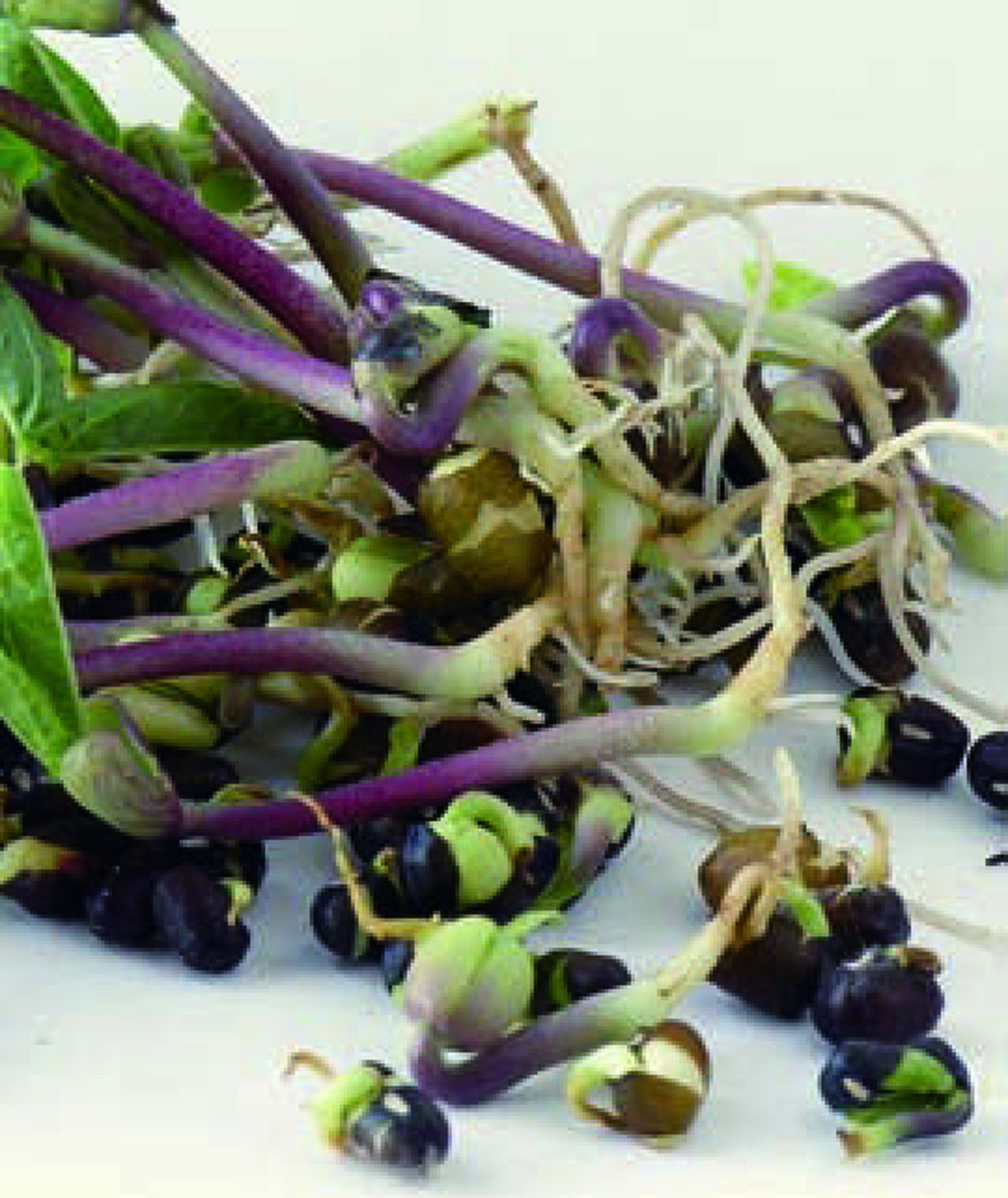
Mung beans are a very good source of magnesium (189mg or 47% d.v.) and phosphorus (367mg or 37% d.v.) plus provide an excellent supply of folate (625mcg or 156% d.v.). Mung beans are one of the best folate foods, essential for prevention from nervous fatigue, anaemia and blood disorders, and essential for expectant mothers. Even a few cooked mung beans mixed into a soup or salad can make the world of difference to your wellbeing. The very good supply of potassium (1246mg or 36% d.v.) plus zinc (3mg) will help protect against infections, and improve blood circulation and nerve transmission. The fair amount of calcium (132mg or 13% d.v.) will assist digestion, and as mung beans provide a very lean fat content of 1%, you can easily add a cream sauce, mayonnaise or salad dressing to boost the taste of the magnificent mung bean. Refer to section entitled as Mung Bean Sprouts for mung sprouts.
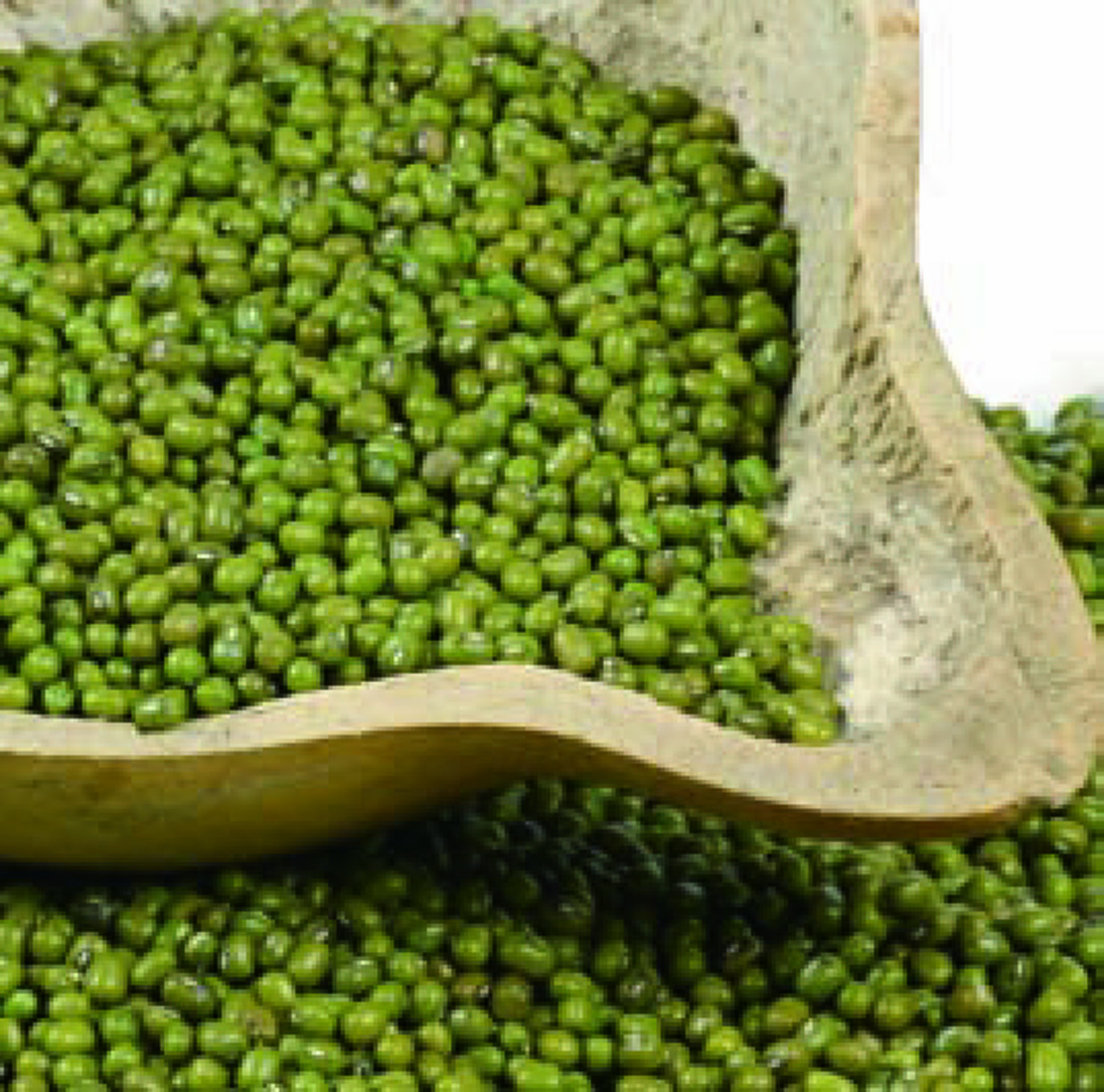
| C. P. L. | CALORIES – total: 341 kcal. per 100 grams |
| 82 25 3 | Calories from: Carb: 246 Protein: 85 Fat: 10 |
PEAS – Pisum sativum/arvense
Peas are possibly the most popular legume, often considered a vegetable but botanically they belong to the pea and pod family (Leguminosae). Peas are a great companion to numerous meals—the common steak meal would be very limited in numerous nutrients without peas, and the peas actually supply more iron (4mg) than the steak (1.8mg)! Peas are an excellent source of fibre (26g or 102% d.v.), magnesium (115mg or 30% d.v.) and potassium (981mg or 28 % d.v.), whereas meat supplies no fibre, very little magnesium (20mg), and 318mg of potassium. The supply of food folate from peas is very good (274mcg), but meat supplies no folate. A deficiency of folate can reduce iron absorption and retard protein digestion, as folate stimulates the production of hydrochloric acid in the stomach. Eat your peas before the meat for better digestion. Winter is pea season so stock up on the benefits from snow peas, green peas and obtain a fair supply of vitamin K (19mg). Remember that vitamin K is destroyed by freezing. It’s also important to note that the older we are, the more vitamin K is required. Meat or chicken supply no vitamin K and their digestion can actually upset the intestinal bacteria that help manufacture vitamin K. The supply of copper from peas is good (1mg or 43% d.v.), whereas meat supplies only .007mg of copper. Peas supply more protein (25g or 49% d.v.) than chicken (21g) or beef (24g), so pile on the peas. Fresh peas also provide a sweet flavour due to the excellent carbohydrate content (60g) and sugar content (8g). Oh, sweet pea!
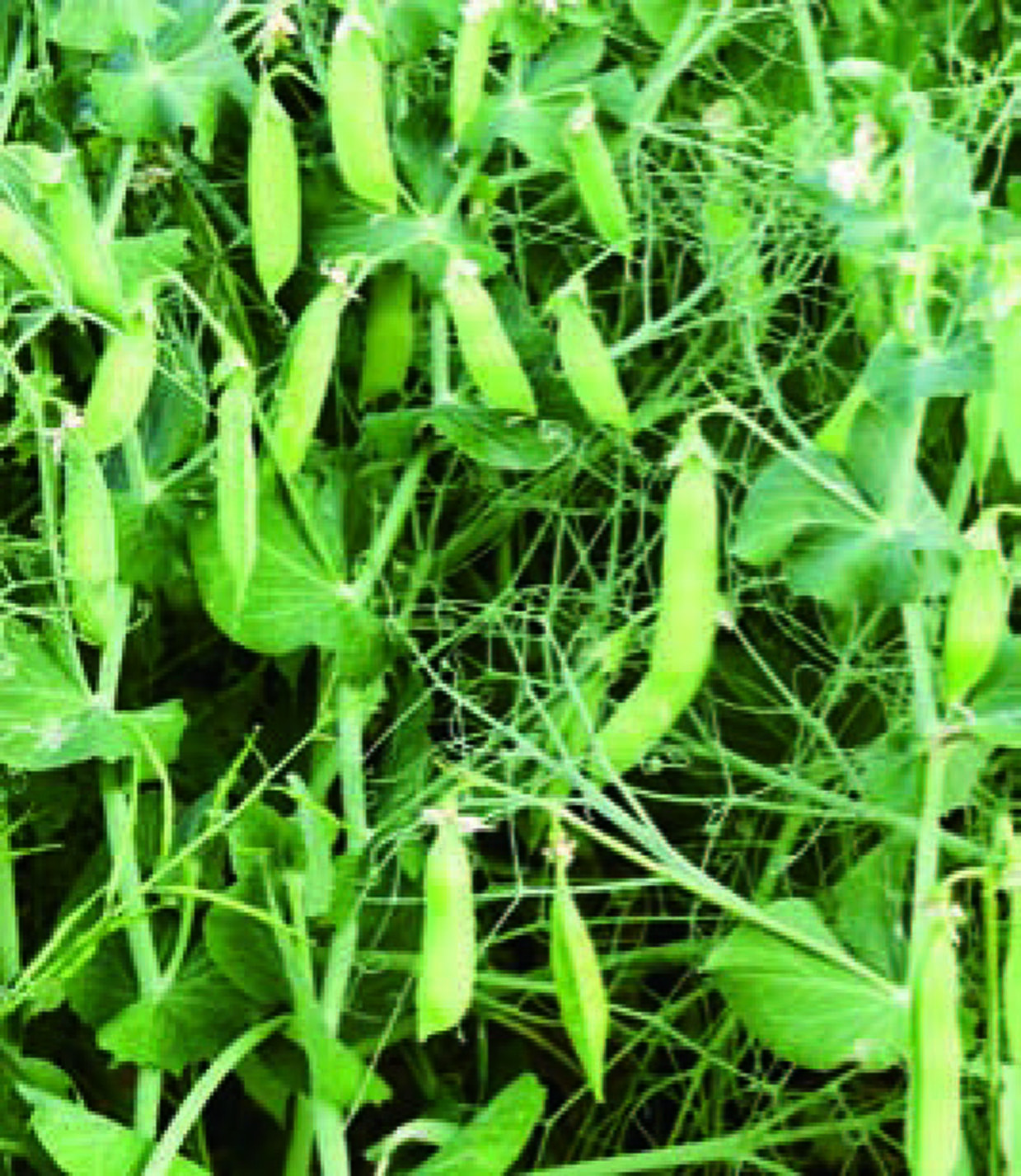
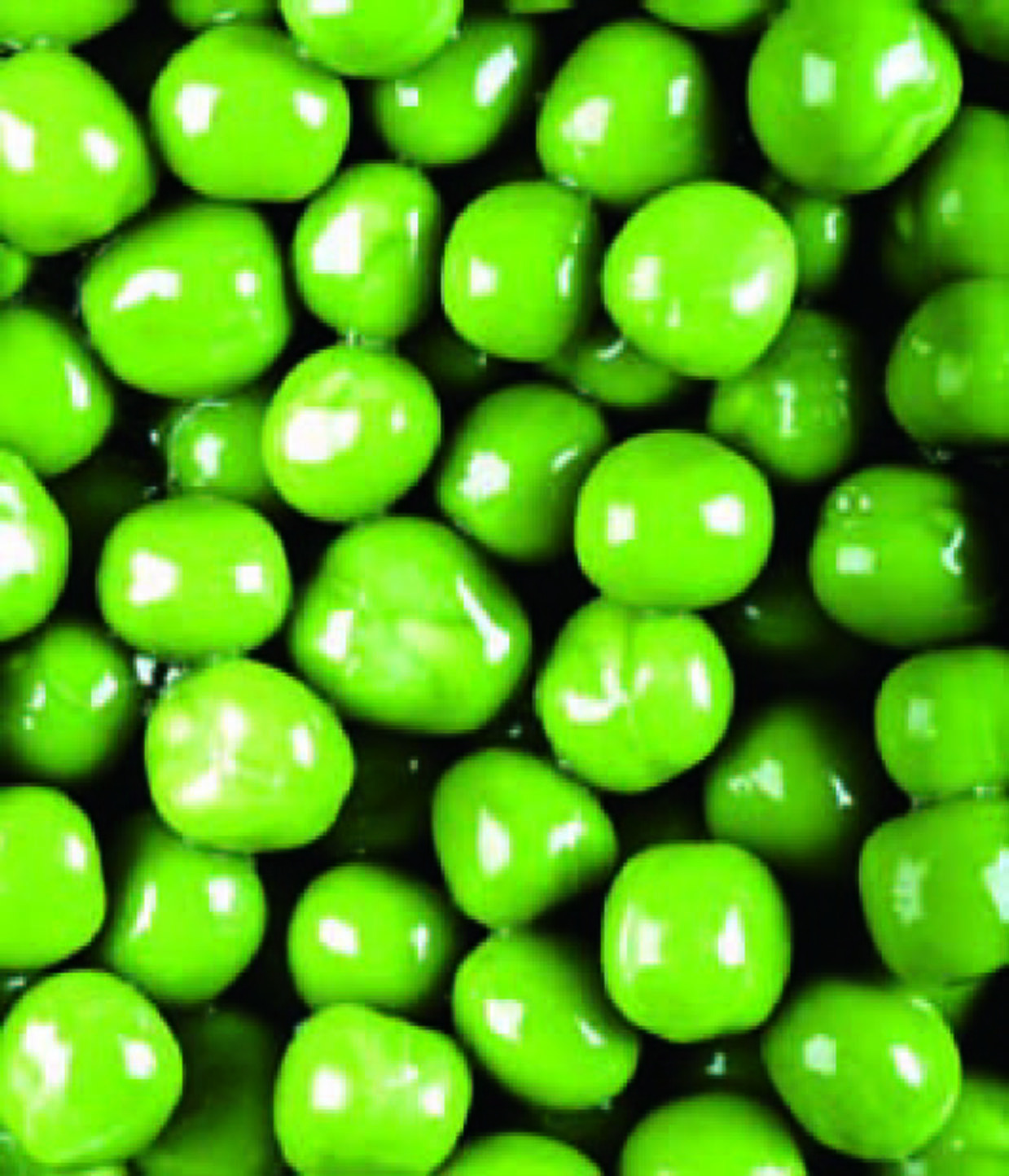
NOTE: d.v. refers to the daily value for women 25–50 years, refer to RDI chart for adult male and child values.
| C. P. L. | CALORIES – total: 567 kcal. per 100 grams |
| 11 16 73 | Calories from: Carb: 65 Protein: 90 Fat: 412 |
PEANUTS – Arachis hypogaea
Peanuts are often referred to as nuts; however, they are a member of the legume family (Leguminosae). Peanuts are unique among legumes as the seed or pea grows underground.
Peanuts provide more calories than any other legume and over 70% is from the rich fat content (49g or 76% d.v.). Peanuts provide a saturated fat content of 7g, polyunsaturated 16g and monunsaturated 24g. Most of the monunsaturated oils are in the form of oleic acid (70%), as contained in olive oil, and 20% linoleic acid or omega-6, with only a trace of the essential and also hard to get omega-3.
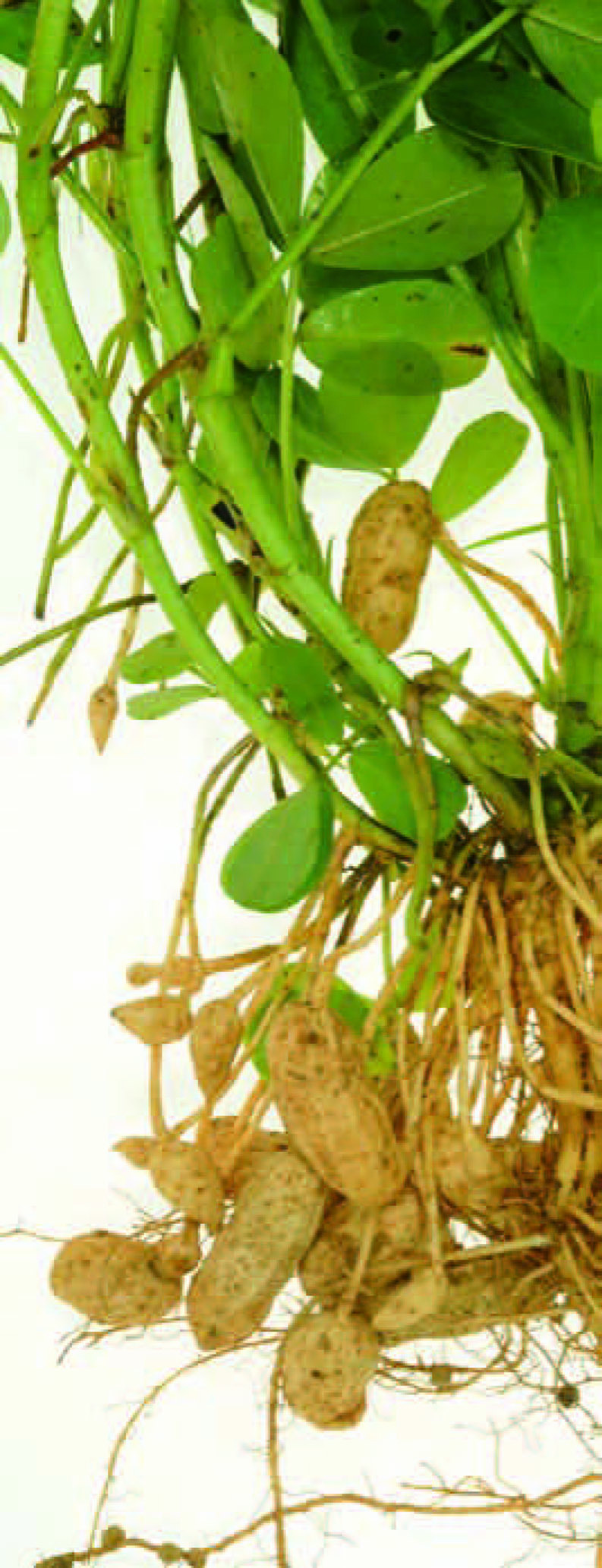
The most common use of peanuts is with the manufacture of peanut butter, and its rich supply of fats makes it a tempting food. Ideally, freshly made peanut butter—crunchy, medium or smooth—can be enjoyed without any additives and obtained from the local health store. The supermarket brand does contain a lot of added salt (630mg) and sugar (8.2g) plus antioxidants (320) and only 85% is peanuts; the balance is added oils that are hydrogenated to provide an even consistency. For the ultimate peanut butter, obtain it freshly ground and add a tablespoon of flax oil then mix well. When used as a spread on bread or toast, peanuts provide protein (26g or 52 % d.v.), but are low in two essential amino acids: methionine and tryptophan. Peanuts have a net protein utilisation of 43%.
Peanuts are a very good source of B vitamins, especially biotin: a quarter cup serve supplies 26mcg or 87% d.v, essential for fat metabolism and sugar metabolism, and it may prevent muscle cramps from excess physical exertion. For active children, the biotin in peanut butter provides power and coordination of muscles and also muscle tone. Vitamin B3 is very well supplied in peanuts (22mg or 120% d.v.), and as it is not heat sensitive, the total value is available to assist the production of energy from carbohydrates, protein and fats. Pantothenic acid or vitamin B5 is also well supplied (2mg or 35% d.v.). It is also required for energy production from foods but it can be depleted during processing.
As a breakfast spread, peanut butter is great, but limit the spreading to less than twice a week, unless you add flax oil for the omega-3 benefits. The supply of the trace mineral copper is very good from peanuts (1.1mcg or 57% d.v.) and peanut butter (0.5g). Copper is essential for the metabolism of fats—isn’t it remarkable how natural foods are balanced to ‘self-manage’ their own digestion!—and copper is also vital for the heart muscles and the nervous system. The supply of folate (240mcg or 60% d.v.) is very good too. But how much peanut butter can you spread and eat? Ideally for children, just enough for 2 slices of toast or approx.20% folate value. The folate balance required is best supplied from broccoli, legumes, vegemite or cashew nuts.

Peanuts also supply good amounts of magnesium (168mg or 42% d.v.), phosphorus (376mg or 38% d.v.), potassium (705mg or 20% d.v.) and zinc (3mg or 22% d.v.). Other benefits of peanuts are the fibre content (8g or 35% d.v.), vitamin E (8mg or 28% d.v.) and manganese (2mg or 70% d.v.).
Peanuts may, however, cause allergic reactions in some people, while the supply of oxalates may cause problems with kidney stones and gallbladder conditions. Peanuts are an acidic food and are best eaten moderately.
Peanuts provide protein and pure potential to promote power.
NOTE: All amounts in this book are measured in milligrams (mg) per 100 grams, unless stated otherwise.
| C. P. L. | CALORIES – total: 416 kcal. per 100 grams |
| 30 30 40 | Calories from: Carb: 122 Protein: 127 Fat: 167 |
SOY BEANS – Glycine max
Soy beans are native to China and for 4000 years the Chinese have produced numerous foods and products from the cultivated soy bean. Today soy beans are available worldwide and recognised as an excellent alkaline protein food—36g or 73% d.v. from a small 100 gram serve. Now that’s protein power! In fact, soy beans are the fourth best protein food after tuna, fish and eggs (refer to the section entitled as What are the best protein foods?).
Soy beans require a lot of cooking time and preparation. Fortunately pre-cooked canned soy beans are very cheap. Such products as tofu—soy bean cheese—are an excellent protein food, easy to add to any fried rice dish. Quickly fried they acquire flavour and present well with green Asian vegetables and a splash of soy sauce.
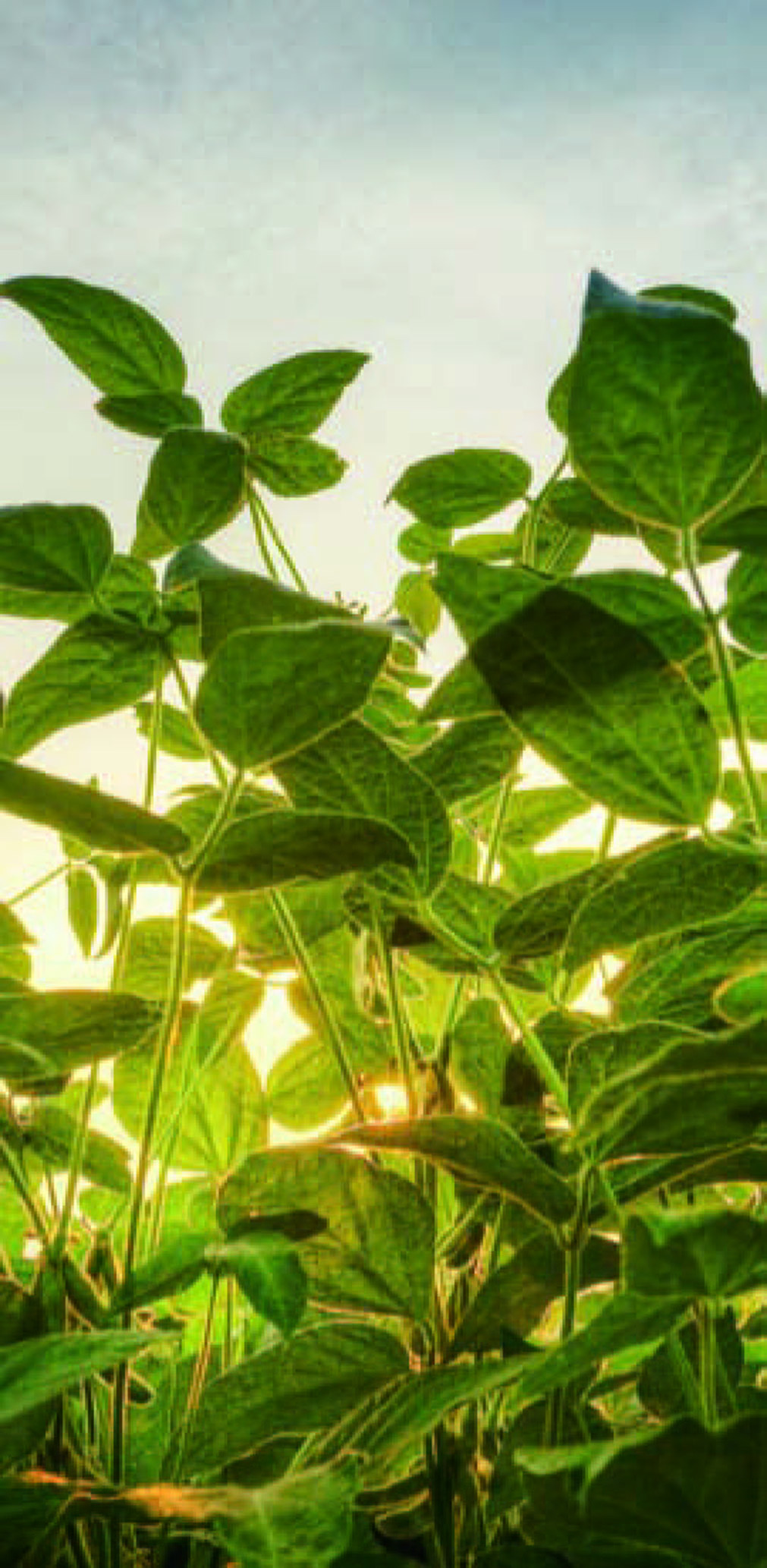
Soy beans provide the essential fatty acids linoleic acid (omega-6) and linolenic acid (omega-3). That’s a real bonus and adds to the need for more soy in the diet. The excellent supply of lecithin is vital for protection from excess cholesterol from animal product foods; soy beans supply no cholesterol and soy oil provides a fair supply of omega-3 (7g), but ideally add a tablespoon of flax oil.
Lecithin is a brain food. If you are feeling fatigued, it may be due to a lack of iron, but add a little lecithin to your breakfast cereal, omelette or pancake mix and wake up your brain and nervous system. Most lecithin supplements are extracted from the mighty soy bean.
Soy beans are an excellent food for diabetics, especially non-insulin dependant, as the protein and fibre (9g or 37% d.v.) may prevent high blood sugar levels and also keeps sugar levels stable. In some cases, regular use of soy beans has lowered the insulin medication requirements. In addition, soy beans help to lower the harmful high triglyceride levels in diabetics. For people with irritable bowel syndrome, soy bean fibre may reduce symptoms such as diarrhoea and constipation. Soy beans provide a nearly unique source of genistein, an isoflavone providing protection against prostate cancer, as genistein blocks cancer cells from reproducing.
Soy milk is a common alternative to dairy milk, and for those people with lactose intolerance or other dairy allergies various varieties of soy milk are now available. Check the labels to see if the soy milk, or beans, are genetically modified, and if so, avoid such products as they are not time-tested to be safe.
Soy beans are an excellent source of the hard-to-find trace mineral molybdenum, vital for the brain and nervous system: 1 cup of soy beans provides nearly 80% d.v. Soy beans are a very good source of iron (8mg) as well as magnesium (280mg or 70% d.v.) and phosphorus (704mg or 70% d.v.). In regards to folate, soy beans (375mg) and soy flour (410mg) are top providers.
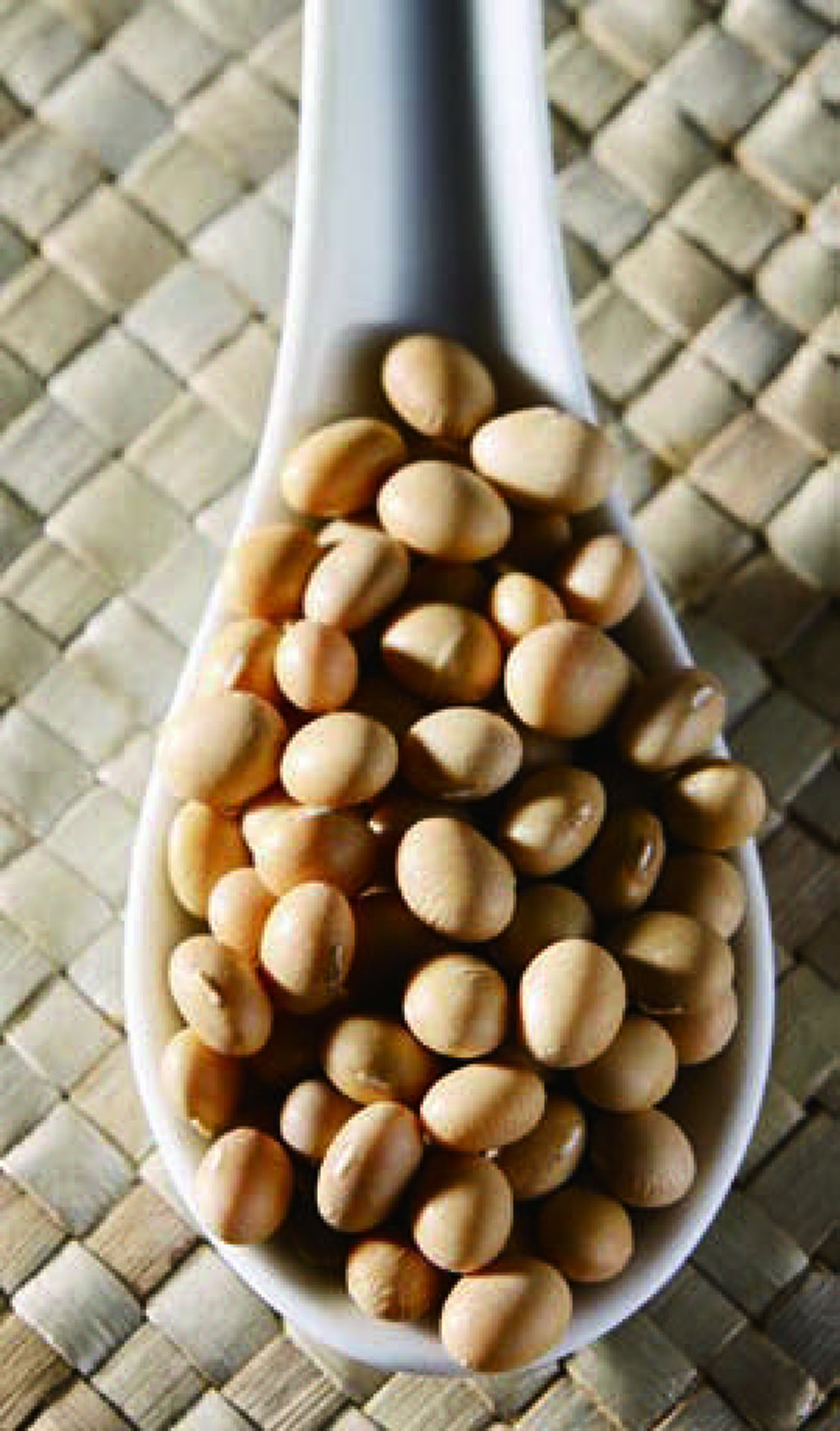
Soy beans supply abundant vitamin K (190mcg). It takes time to get used to soy protein power, so start off with small serves of beans or tofu and maintain a regular weekly soy meal for a protein boost that surpasses any from beef (which are often fed soy to promote growth). Try tofu ice cream as a dessert and make a milk shake from soy milk with a dash of ice cream for a sweet snack.
Soy is waiting to provide a range of benefits and recipes, direct from a packet, carton or can—no need to prepare.
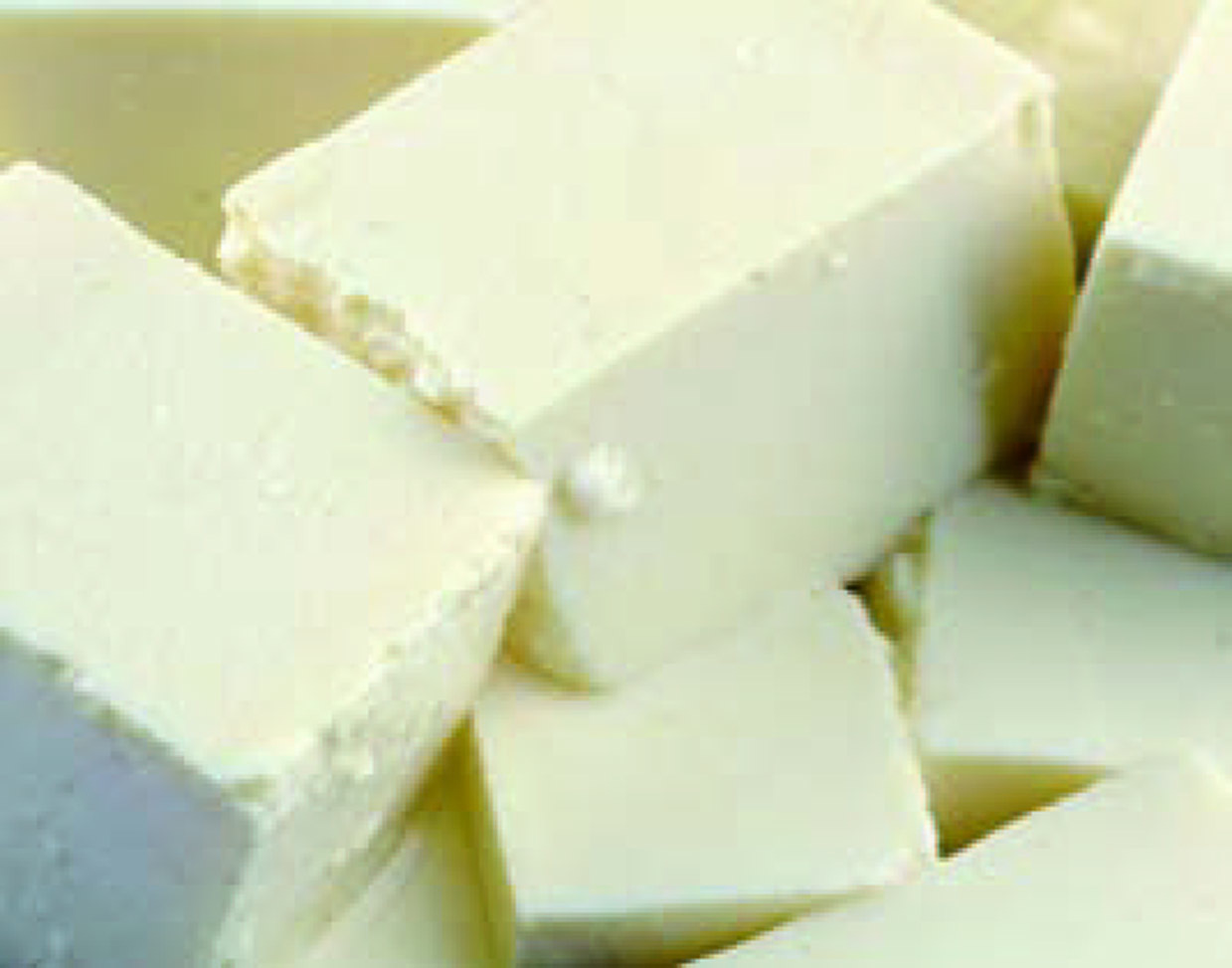
Soy beans are small in size but superior in sustenance.
NOTE: d.v. refers to the daily value for women 25–50 years, refer to RDI chart for adult male and child values.
SOY BEANS | TRADITIONAL PRODUCTS
There are two types of soy beans: the edible bean and the commercial field variety. The majority of soy products are produced from the commercial field variety. Some of these products have been used for thousands of years and others have been developed only recently. Both the Chinese and Japanese have used soy products long before the western world even heard the name soy.
TOFU: Developed by the Chinese, it is prepared from ground soy beans and then powdered gypsum is added to promote a curdled effect. It can be eaten as such or fermented to produce a high protein tofu-cheese.
MISO: Used by the Japanese for over 2000 years, it is prepared from fermented soy beans, cooked rice and sea salt. Miso preparation is a very lengthy process: the mixture is placed in large wooden vats and slowly fermented with the organism Aspergillus oryzae. Miso is available at most natural food stores. It supplies excellent amounts of protein and can be suitably combined to enhance soups, spreads, gravies or diluted and mixed with a salad dressing.
HAMANATTO: Developed in Korea, it is made from steamed soy beans, roasted wheat and then fermented. The mixture is poured into large wooden buckets and placed in the sun; salt and ginger are also added. This process takes about one year and then the mixture is placed on wooden trays and allowed to dry. Hamanatto supplies excellent amounts of protein and it combines well with most cooked meals.
NATTO: Developed by Buddhist monks over 2000 years ago. The process uses cooked soy beans inoculated with Bacillus subtilis. The mixture is then wrapped in thin sheets of pinewood and allowed to ferment for a few days.
SOY SAUCE: The most widely used soy product, it is prepared from cooked soy beans mixed with roasted wheat and then impregnated with the organism Aspergillus oryzae. The mixture is placed into wooden vats, salt is added and allowed to ferment for a minimum of six months, sometimes five years. The mixture is strained and placed in glass. Soy sauce combines very well with savoury rice dishes, salad dressings, gravies and many meals. It is full of salt, so take it easy!
TAMARI: A similar product to soy sauce, fermented for at least three years, it will enhance the taste of rice dishes, fresh garden salad or many other cooked meals. Tamari is available at most natural food stores. Try the taste sometime; it’s an excellent substitute for table salt. Fermented foods promote digestion and health.
SOY MILK: An excellent substitute for either powdered or pasteurised cow’s milk. Soy milk is prepared from presoaked, ground soy beans. The mixture is then boiled and strained and reboiled. Commercial soy milk is available in a dry powdered form. Compared to cow’s milk, soy milk is not mucus forming, far richer in the mineral iron (containing over eight times more) and more compatible with human digestion. The taste is different to cow’s milk: try a half-half combination to start and slowly wean yourself off the cow’s milk and you will obtain the best of both taste and nutrients. Avoid those winter coughs and splutters: avoid cow’s milk.
SOY GRITS: An essential food for every kitchen, soy grits are prepared from cracked soy beans. The one advantage over the beans is that they require far less cooking time—less than half an hour moderate heat. Soy grits will enhance the protein value of all meals. Small amounts could be served as a side dish mixed with steamed vegetables or combined with any soup, casserole or bean loaf or cooked mung beans.
SOY FLOUR: An excellent source of complete protein, there are three types of soy flour: full-fat, 20% fat content; medium-fat, 5%; or the popular fat-free soy flour. Soy flour contains no gluten, producing a very compact homemade bread. In combination with wheat, rye or triticale flour, soy flour could be used in the following proportions: 3 cups wheat (rye or triticale) with half a cup of soy flour. That will produce a light bread with an exceptional protein content. Make sure your kitchen is always stocked with some soy flour and soy oil (refer to the section entitled as Soy Oil).
TEMPEH: Developed in Indonesia, it is prepared from fermented soy beans and then wrapped in banana leaves; the result is a cheese with a very distinct taste.
NOTE: All amounts in this book are measured in milligrams (mg) per 100 grams, unless stated otherwise.
NOTE: d.v. refers to the daily value for women 25–50 years, refer to RDI chart for adult male and child values.
|
LEGUMES |
MAIN NUTRIENTS, ANTIOXIDANTS & PHYTONUTRIENTS |
BODY SYSTEM BENEFITS |
|---|---|---|
| CAROB | alkaline, pectin, fibre, calcium, potassium, zinc, iron, carbohydrates | digestive, muscular |
| CHICK PEAS | protein, fibre, folate, iron, copper, manganese, potassium, molybdenum | blood, circulatory |
| GREEN BEANS | folate, potassium, fibre, vitamin A, plant hormones, vitamin K | circulatory, digestive |
| KIDNEY BEANS | protein, calcium, carbohydrates, fibre, potassium, folate, iron, molybdenum, magnesium, copper | elimination, digestive, growth, blood |
| LENTILS | protein, carbohydrates, fibre, iron, phosphorus, molybdenum | digestive, blood nervous, blood, |
| LIMA BEANS | protein, magnesium, carbohydrates, phosphorus, iron, molybdenum, fibre, folate, copper, manganese | elimination, cellular |
| MUNG BEANS | protein, fibre, iron, magnesium, folate, potassium, carbohydrates | blood, elimination |
| PEAS | fibre, iron, magnesium, folate, copper, protein, vitamin K | nervous, blood |
| PEANUT | biotin, protein, vitamin B3, folate, magnesium, phosphorus, fibre, manganese, vitamin B5, copper | nervous, muscular, growth |
| SOY BEANS | protein, lecithin, fibre, genisten, molybdenum, iron, magnesium, phosphorus, folate, vitamin K, omega-6, omega-3 | growth, circulatory, blood, nervous |
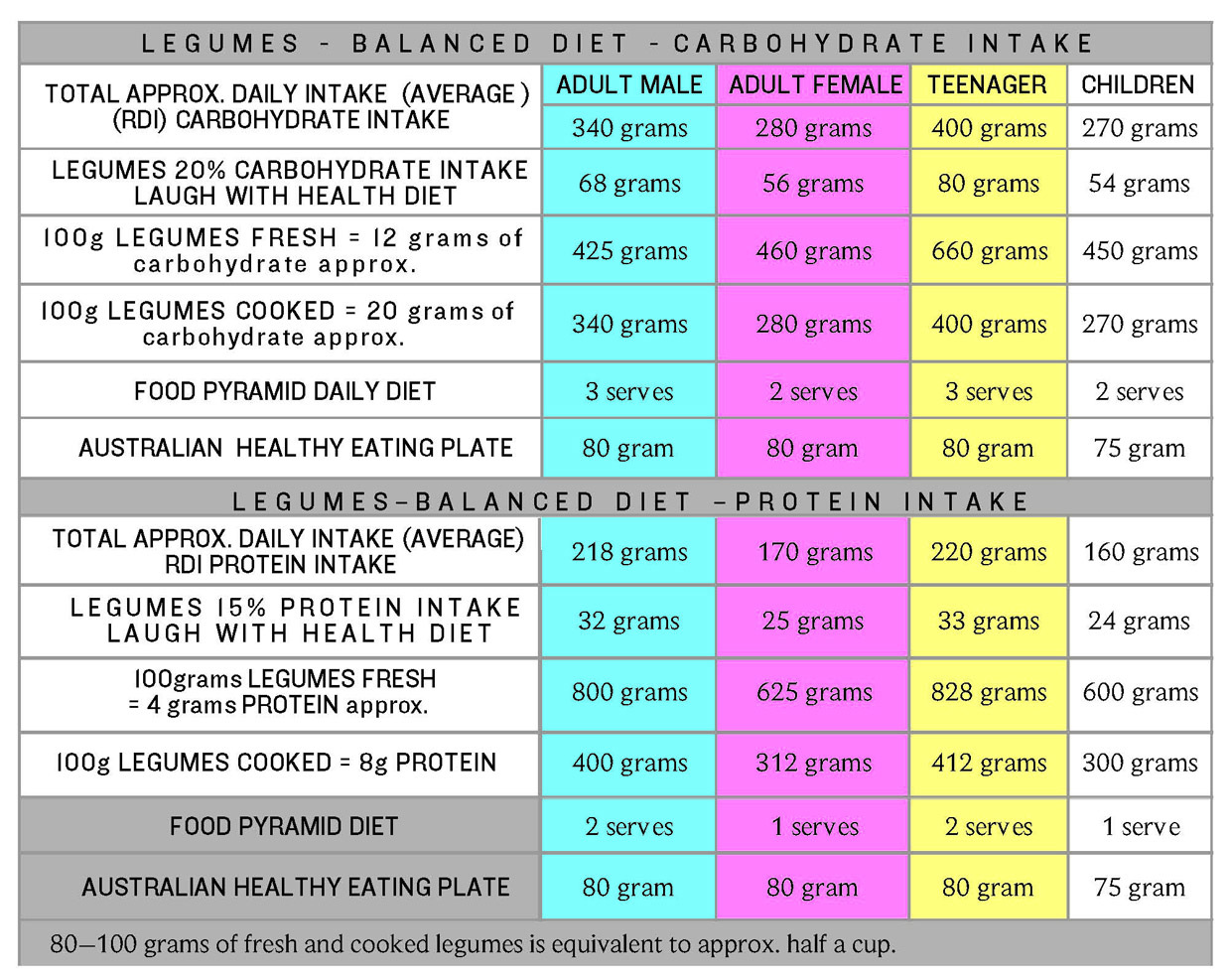
NOTE: d.v. refers to the daily value for women 25–50 years, refer to RDI chart for adult male and child values.